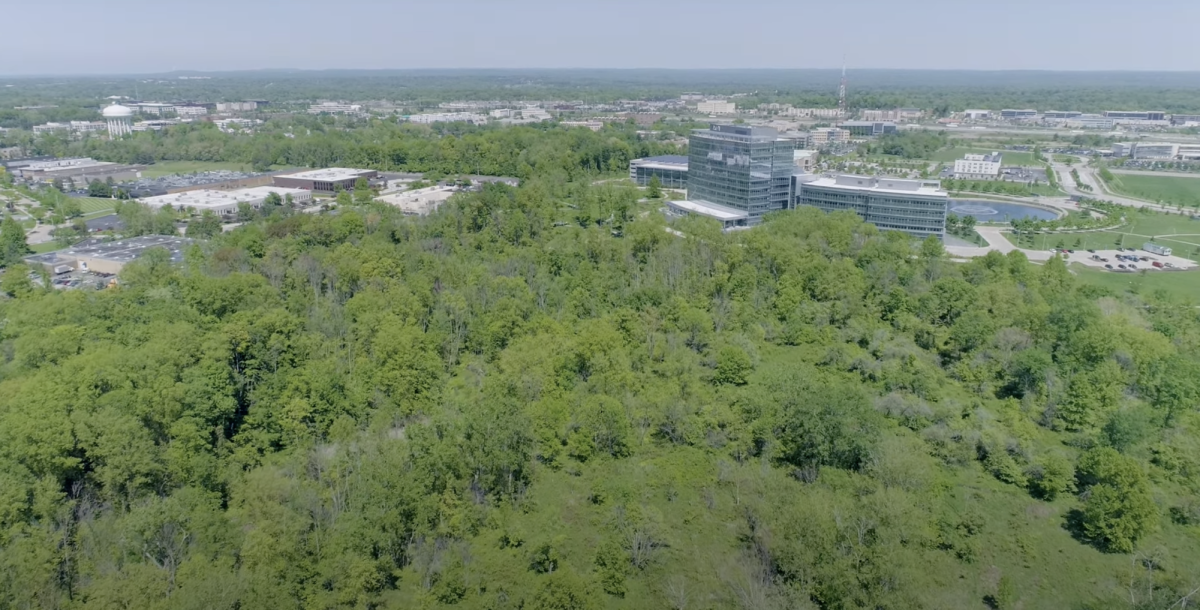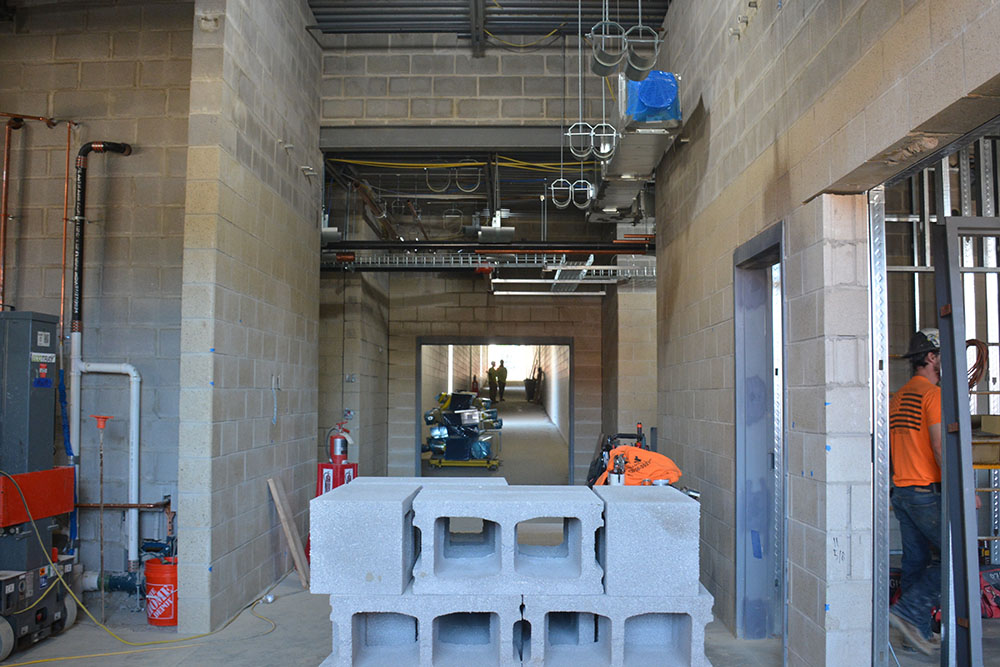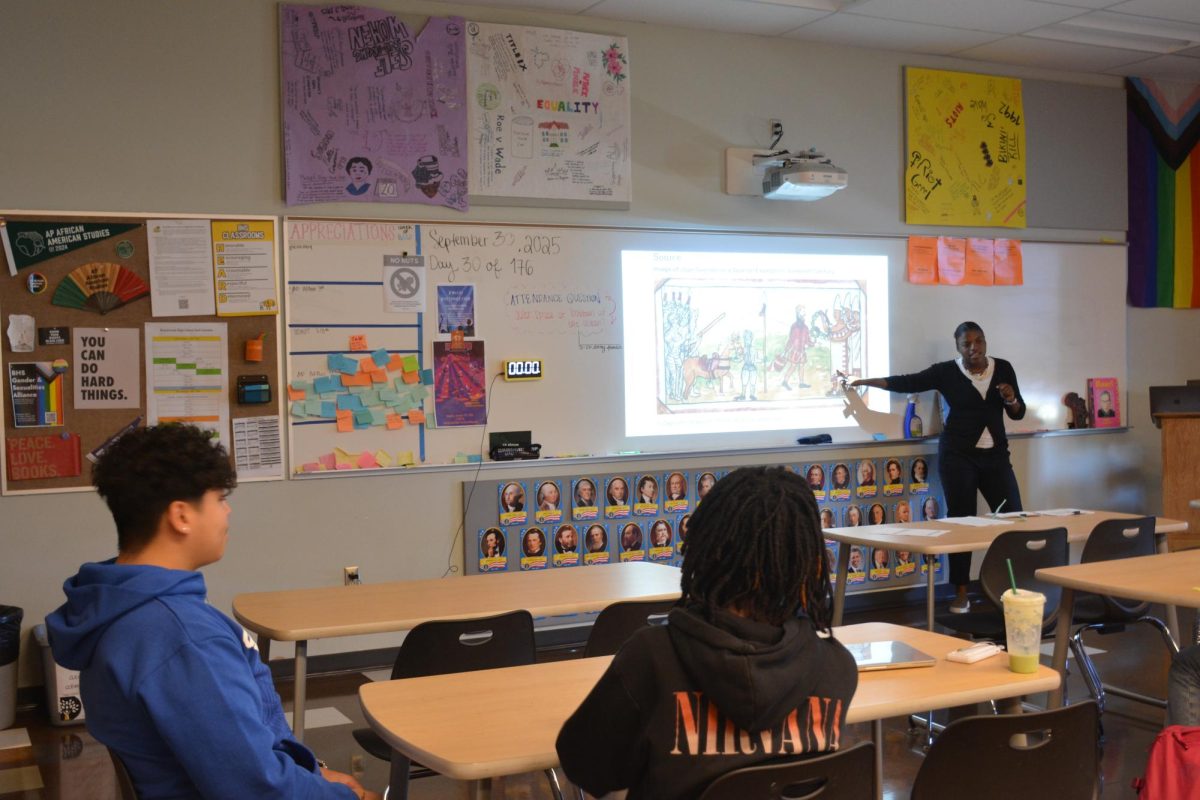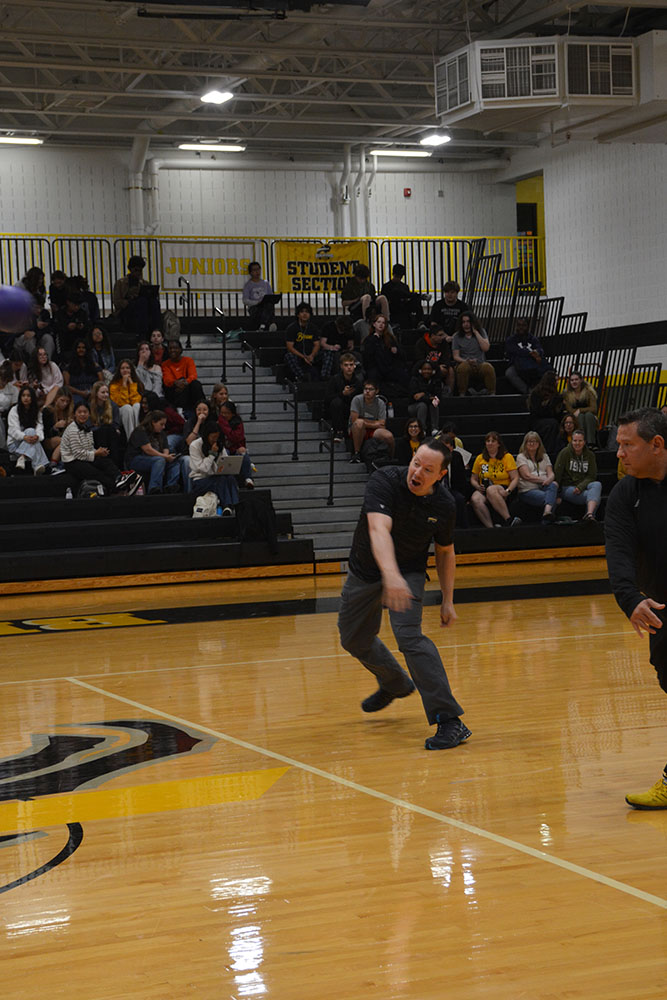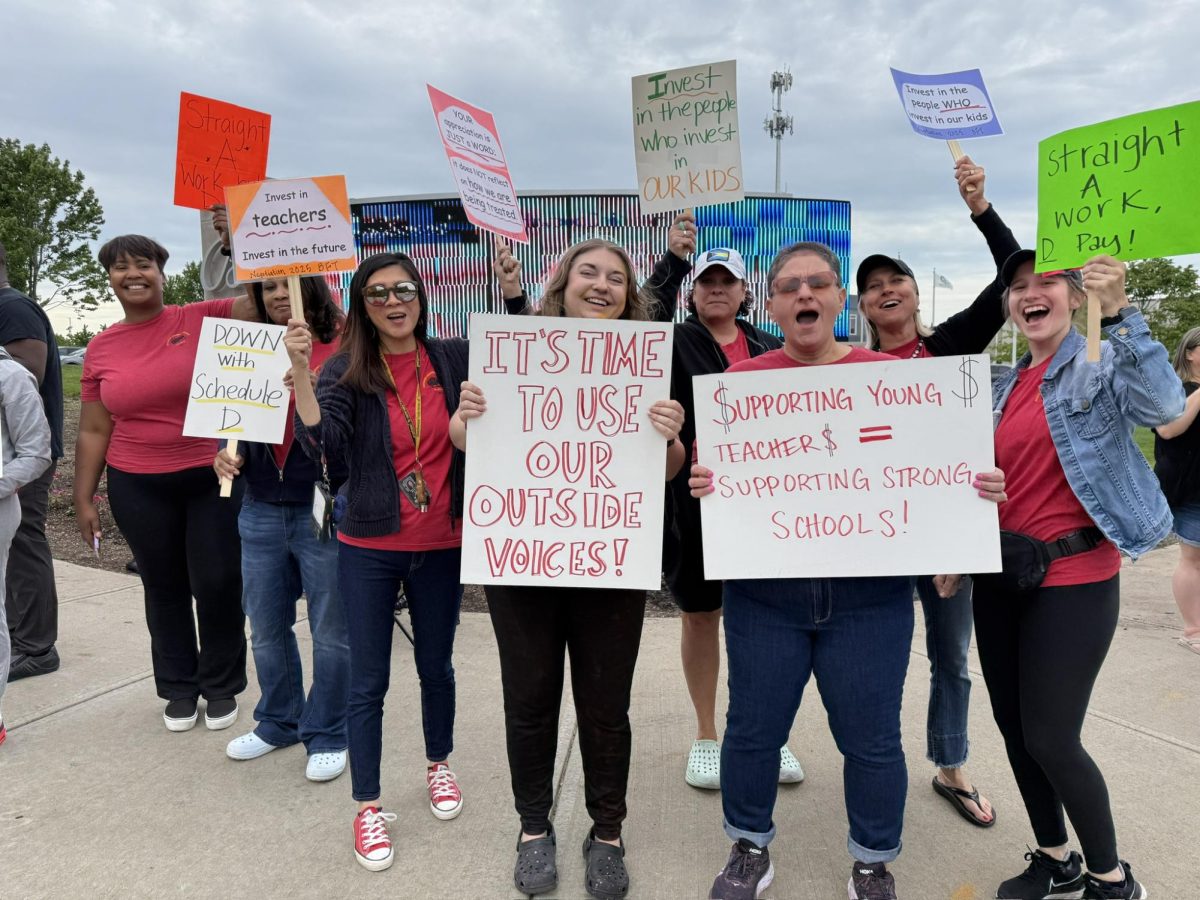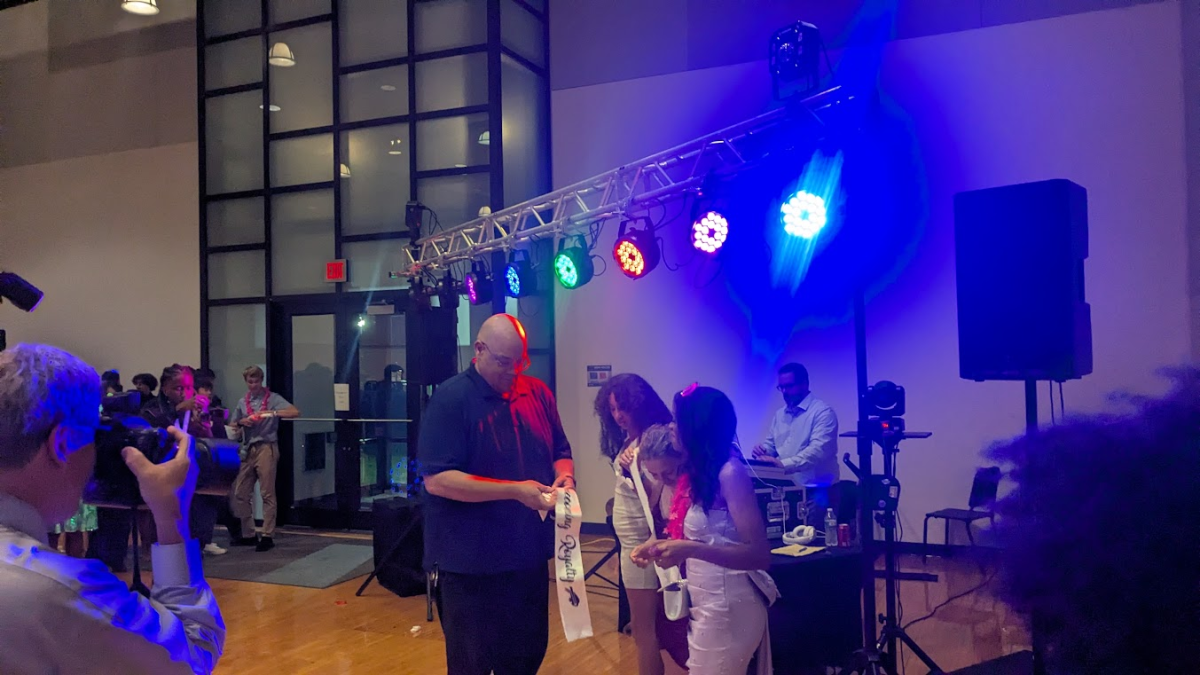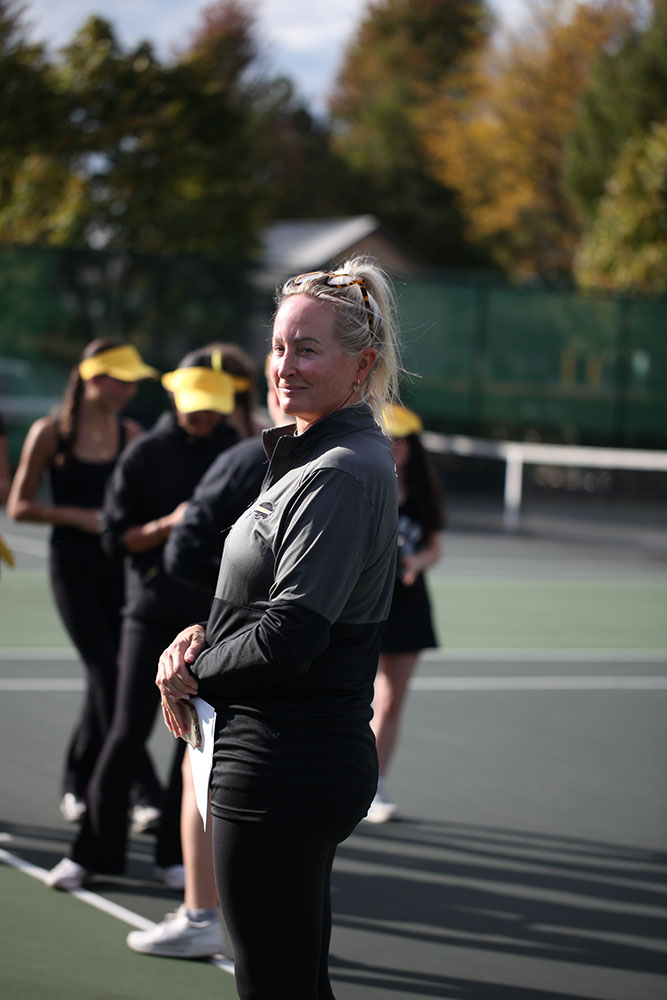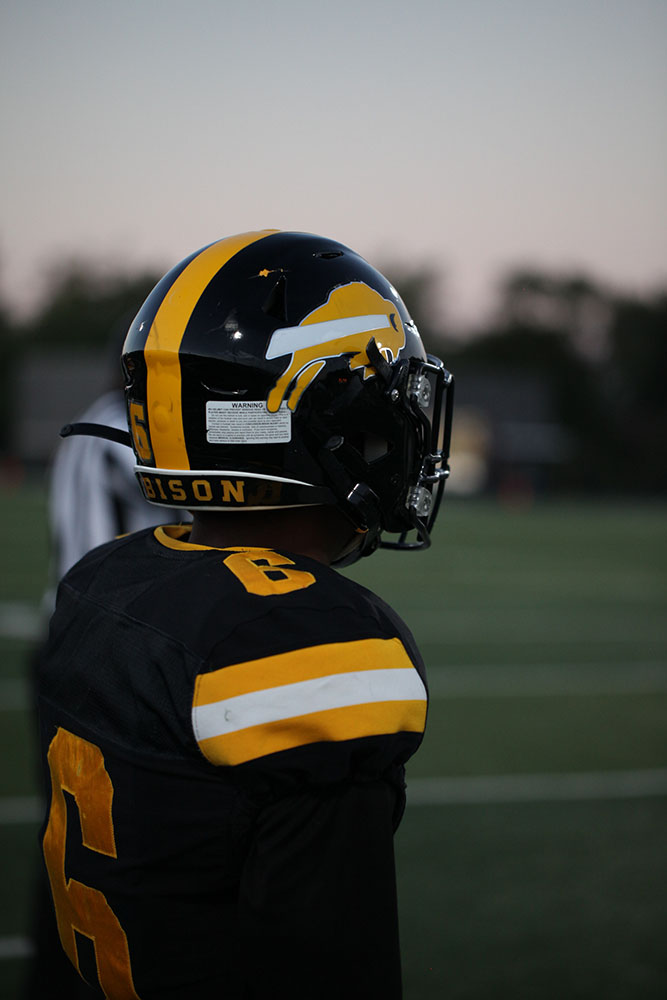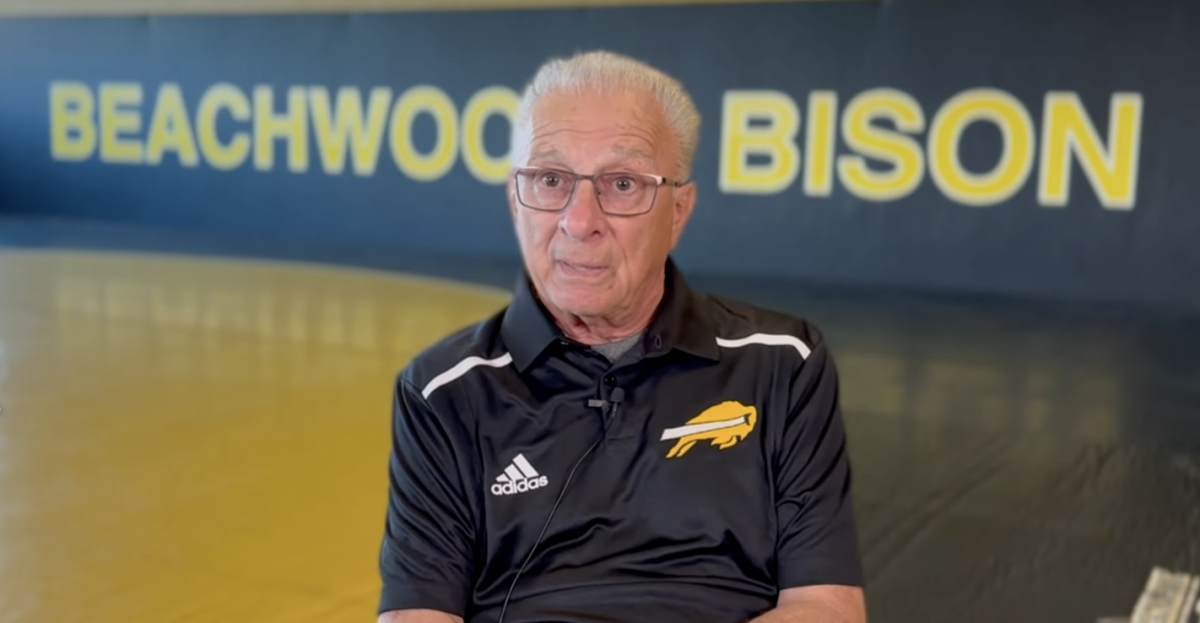In light of the Sandy Hook shooting in December and the anniversary of the Chardon tragedy, schools are reexamining their security procedures.
BHS Principal Ed Klein is confident about our school’s security measures.
“One of the most important things is that we’re visible,” he said. “Everyone is constantly walking around the hallways, aware of who belongs here.”
Klein also mentioned the balance between a welcoming school environment and strict school security.
“We want people to feel safe and secure here,” said Klein.
For those concerned about the openness of the school, Klein is reassuring.
“Once the building is locked at 7:50, you have to ring the buzzer to get in,” he said. “If you belong here, you don’t need to stop to sign in with Mrs. Stanisa. She’s aware of who belongs here. She may not know everybody’s name, but she knows who is who.”
Stanisa will have an improved lookout station for the start of the 2013-2014 school year. She will be moved to the front door, where she will be able to see students through the door, the video monitor and as they are walking past her
“I think the most unique component of the safety plan that we have at Beachwood is the integration of the school’s efforts with those of the city,” said Superintendent Dr. Richard Markwardt. “The Beachwood emergency response services are phenomenal. Our plan rests very much on the foundation of their preparedness.”
But what exactly causes some students to resort to violence? Can violence be predicted?
BHS Psychologist Kevin Kemelhar explained that a person in extreme distress such as Eric Harris and Adam Lanza is likely to show warning signs.
Kemelhar wrote in an email, “Warning signs could include demonstration of extreme emotion, little emotion, unstable thoughts, erratic behavior, isolation, inability to effectively communicate and threatening communication/behavior. Other warning signs include information found on social media sites such as Facebook, Twitter or Snapchat.”
How do BHS students feel about their safety
“I guess I feel pretty secure,” mentioned BHS freshman Jackson Bogomolny. “I never thought about something like [Sandy Hook] happening to us. I think of it more as something that always happens somewhere else.”
“I think I feel a little less secure than when Sandy Hook occurred,” commented junior Alexander Machtay. “[However] I feel pretty confident that the administrators know what they are doing and have the right policies in place to keep me safe.”
“These mass school shootings don’t happen every day. Simply upping security isn’t going to do anything,” said junior Varun Jambunath. “Gun control in general should be the approach you take rather than specific limited securities such as arming teachers or having paramilitary officers walking around the school.”
Since the Sandy Hook shooting, the Obama Administration has been advocating gun control measures such as reinstating the assault weapons ban or universal background checks.
Will there be any new security measures at BHS?
The current procedure for dealing with threatening intruders is a “lockdown,” which students have become familiar with through annual drills, and discussions in classes.
Some districts are implementing a security system known as A.L.I.C.E., which stands for “Alert, Lockdown, Inform, Counter” and is meant to be a program to train teachers, administrators and students who feel the need to react in the event of intrusion.
Markwardt feels that any policy needs to consider a variety of possible responses to a threat.
“People respond to different crises in different ways. I have no doubts that if somebody came into this building intending to do harm, some would go into action to neutralize the intruder…other people would be scared stiff and physically could not do anything,” said Markwardt.
“Security provisions, processes and procedures are constantly rewritten and revised…[but] you can never plan one hundred percent for every event,” said Klein.
Other districts have identification badges that allow staff, students and administration to know exactly who belongs in a building and who does not. Beachwood does not utilize badges.
“Basically, we’re a relatively small school district, [and] we know who our students are,” said Markwardt. “We don’t necessarily see the need for ID badges to enhance our security.”
In parts of Ohio, some have proposed arming teachers as an extra step of protection in the classroom.
“I would not want to see that happen either here, or where my kids go to school. If the school decides to have trained, armed peace officers in the building, I’d be fine with that. I would not want to see teachers having the responsibility of keeping and caring for a gun,” said BHS science teacher Joe Burwell.
“I don’t see a future with armed teachers. It is one thing to receive instruction and practice with a gun, however, the emotional side of carrying and possibly using a gun is totally another aspect,” wrote Kemelhar.
“Our job is to do everything we can to prevent [something like Sandy Hook] from happening and doing everything we can do to respond. I think it’s a combination of having done a good job, [having] been proactive, [having] the staff and students listen to each other and being lucky,” said Burwell.





